Introduction
This page is provides advice and tips for surveying terrestrial Woodlice (order Isopoda: suborder Oniscidea). Woodlice tend to occur with other invertebrates, including millipedes and centipedes (Myriapods), and many of the methods described below are also equally appropriate for these species. Advice for surveying coastal intertidal isopods can be found here.
Woodlice are amongst the most accessible groups of animals to study. However, our present knowledge of the status and distribution of woodlice within Britain remains patchy. Of the c. 40 species found outdoors in Britain, Common Pygmy Woodlouse Trichoniscus pusillus agg., Smooth Woodlouse Oniscus asellus and Rough Woodlouse Porcellio scaber, are common just about everywhere. A fourth species Philoscia muscorum is rare in northern Scotland, while a fifth species, the pill-bug Armadillidium vulgare, is only common in the south and east.
Surveying Techniques
Field Equipment
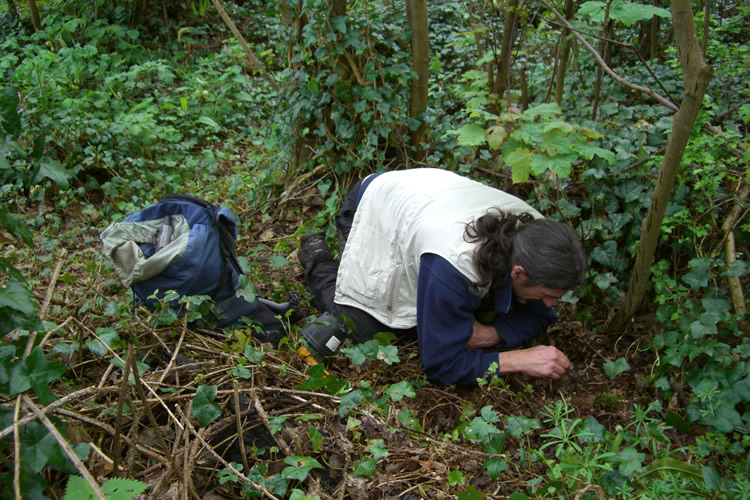
There is very little equipment needed to collect woodlice (millipedes and centipedes).
- Note book and pencil - For recording site details and field-notes.
- Handlens (x10 or x20) for field identification.
- Widger (steel spatula) or an old knife - for poking about among soil, leaf litter or beneath loose bark.
- Fine forceps or a camel-hair brush - for picking up small specimens without damaging them.
- Specimens tubes – To collect specimens for closer examination (either alive or preserved). Plastic tubes with screw tops do not break or spill alcohol.
Field Craft
Although they can be found all year, woodlice (millipedes and centipedes) are considerably easier to find in autumn and spring, when conditions are damp, but mild. During or immediately after heavy frosts is also a good time for the normally elusive soil dwelling Pygmy Woodlice.
Onc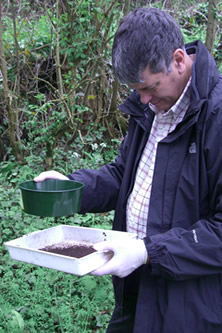 e one is familiar with the common ‘famous five’ species it is easier to focus on what looks different or ‘odd’. Take particular care to look for small Pygmy Woodlice or others that are easily mistaken for more common ones.
e one is familiar with the common ‘famous five’ species it is easier to focus on what looks different or ‘odd’. Take particular care to look for small Pygmy Woodlice or others that are easily mistaken for more common ones.
It is also important to remember that the majority of woodlice have distinct habitat preferences and are rarely found during casual surveys. The ability to recognise the most rewarding places to search is essential, a skill most easily learnt by observing an experienced field worker.
Collecting Methods
There are a variety of ways of collecting woodlice (millipedes and centipedes) and each will produce different results.
Stone and Log turning: This is the simplest method. Woodlice tend to be on the underside of the turned object, rather than on the underlying soil surface. Fast moving ‘runners’ will need to be captured quickly, whilst stationary ‘clampers’ can be collected at a more leisurely pace. If ants are present look for Platyarthrus hoffmannseggi.
Hand Sorting and Sieving: Many substrates, such as rotten wood, leaf litter, moss, coastal shingle or strandline debris, can be carefully hand sorted or even sieved onto a white polythene sheet. Very effective for those 'little white jobs'.
Pitfall Trapping: Large numbers of mainly common species can be caught, but in some habitats, such as the coast, some very rare species could be encountered - notably the elusive Stenophiloscia glarearum.
Night-time (Torch) Surveys: Woodlice are nocturnal and those inhabiting inaccessible crevices on walls, sea cliffs or even shingle beaches, can be much easier to survey at night with a torch. This is a good method for Porcellio spinicornis and Armadillidium depressum.
Woodlouse Habitats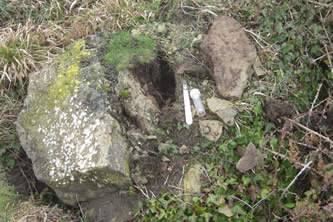
Woodlice (millipedes and centipedes) occur in a wide range of habitats, but for convenience these can be considered as three broad categories: Coastal habitats, Inland rural habitats and man-made (synanthropic) habitats.
Coastal habitats
In terms of both species diversity and species rarity the coast is the most interesting place to look for woodlice. A detailed account of the great variety of coastal habitats in which woodlice can be found is given in Gregory (2009).
The majority of coastal species occur in the ‘splash zone’ at or just above the zone of accumulated ‘strandline’ debris. Six species, including the small pale Trichoniscoides saeroeensis, are rarely found elsewhere.
This and other species can be found amongst strandline debris, beneath pieces of drift wood or under large stones at the edge of salt marsh, sand dunes, shingle beaches or amongst boulder debris at the base of cliffs. Sometimes it is necessary to dig down some 10 to 30cm, to where peaty soil has accumulated, to find the more elusive species. Well above the splash zone, for example on sparsely vegetated cliffs, additional species such as the false pill-woodlouse Cylisticus convexus can be found.
Inland rural and semi-natural habitats
Deciduous woodland, especially if damp and on calcareous soils, can be rewarding for finding woodlice. Turning logs and large stones will locate most species (including Ligidium hypnorum), but those partly embedded into stream banks or damp hollows are better for small elusive Pygmy Woodlice (e.g. Haplophthalmus montivagus). However, non-standard methods could turn up the unexpected. For example, in acidic oak woodlands searching under loose bark or in rot holes several metres above ground may locate the rare pill-woodlouse Armadillidium pictum.
It’s often difficult to find species in grassy habitats. Look for convenient stones or bits of dead wood to look under or failing that hand search or sieve any leaf-litter. More unusual grassland species include Armadillidium pulchellum (in upland dry grassland) and Trachelipus rathkii (in damp riverside meadows).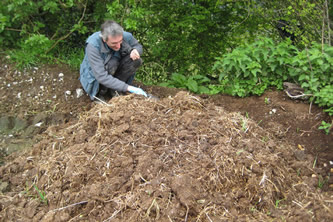
Man-made (synanthropic) habitats
Many of the typical ‘coastal’ species, such as the Rosy Woodlouse Androniscus dentiger, have readily colonised inland sites disturbed by human activities. Thus, sites such as old churchyards, railway sidings and disused quarries can support extremely diverse woodlouse (and millipede and centipede) communities. Although these habitats are artificial, it is important that they are examined if a balanced picture of Britain’s woodlouse fauna is to be achieved.
Elusive Pygmy Woodlice can be found beneath large stones or hand sorted from piles of stone and rubble. Features such as stone walls/rockeries and compost/manure heaps also support additional species rarely found elsewhere (including Porcellio spinicornis and Porcellionides pruinosus respectively). Two species, Porcellio dilatatus and P. laevis, are mainly confined to stables and dairy farms. It is also possible that a species of woodlouse new to Britain may be found in syanthropic habitats.
Reference Specimens
Unfortunately, many species cannot be identified from photographs of the live animal. Thus, it is useful to keep a few preserved specimens of each species as a reference collection. This will considerably speed up future identification work (by comparison with your previously preseved reference specimen) and if the record is queried by anyone you will have the specimen to prove it!
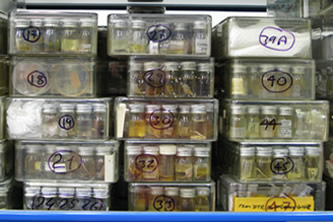 Woodlice (millipedes and centipedes) cannot be pinned dry like insects (their legs and antennae drop off), but must be preserved 'wet'. Usually 70% alcohol, either industrial denatured alcohol (IDA) or isopropanol (isopropyl alcohol) are used. A Customs and Excise licence is needed to purchase IDA but isopropyl alcohol is more readily obtained. Specimens can be killed and preserved by putting them directly into a tube of alcohol. Alcohol evaporates readily so tubes must be kept tightly sealed and levels need to be checked once a year. 12mm x 50mm glass tubes with polythene stoppers are ideal.
Woodlice (millipedes and centipedes) cannot be pinned dry like insects (their legs and antennae drop off), but must be preserved 'wet'. Usually 70% alcohol, either industrial denatured alcohol (IDA) or isopropanol (isopropyl alcohol) are used. A Customs and Excise licence is needed to purchase IDA but isopropyl alcohol is more readily obtained. Specimens can be killed and preserved by putting them directly into a tube of alcohol. Alcohol evaporates readily so tubes must be kept tightly sealed and levels need to be checked once a year. 12mm x 50mm glass tubes with polythene stoppers are ideal.
Data labels, using pencil or spirit-proof ink on paper or card, must be put inside the tube with the specimens. The minimum essential data required is the species name (if identified), location name and grid reference, the name of the recorder (and identifier) and date of collection. Essentially; what, where, who and when.
Reference
Gregory, S. (2009). Woodlice and Waterlice in Britain and Ireland. Field Studies Council/Biological Records Centre.
